Safety nets have become an increasingly effective and indispensable solution for ensuring safety in different areas of our home. The famous expression “you can never have too much safety” takes on a very special meaning when we think about the home environment, especially if there are children or pets sharing the space. In this context, safety nets emerge as an indispensable resource.
Elas não se limitam apenas a sacadas e varandas de apartamentos ou casas de dois andares, mas se estendem para escadas, janelas, beliches e até piscinas. Além disso, essas redes garantem a segurança dos nossos queridos animais de estimação, protegendo-os de possíveis quedas ou acidentes.
Unfortunately, Brazil records, on average, around 30 children die every year due to falls from buildings and high places, with another 500 hospitalizations due to falls. In addition, many tragedies related to drowning in domestic swimming pools are reported annually. Safety nets can change this reality, offering greater safety in homes. Now, we invite you to delve into our complete guide on safety nets:
The versatility of installing protective nets

As mentioned, safety nets are versatile and can be installed in a variety of places where there is an imminent risk of falling. Balconies, stairs, bunk beds, swimming pools, and more can be equipped with safety nets.
Installation, however, must take into account the type of structure that will support it. For example, sliding windows require the mesh to be installed on the outside of the property, while in Venetian-type windows, the mesh can be installed between the glass and the shutter. For tilt-and-turn windows, common in kitchens and bathrooms, the installation must be internal, so as not to obstruct the opening of the window.
How to differentiate safety nets?
Basically, safety nets are divided into two categories: polyamide and polyethylene. The difference lies in the composition of the material. Polyamide nets, made of nylon fiber, are more permeable and subject to corrosion, being suitable for indoor areas.
Polyethylene nets have similar characteristics to plastic, being waterproof and more resistant to impacts. They are, therefore, recommended for outdoor areas, such as balconies and terraces. Another factor to be considered is the size of the gaps in the net. Homes with pets should prefer nets with smaller gaps to prevent pets from getting through. However, these gaps should not be smaller than 5 cm.
And remember: Always opt for nets made for protection. They follow specific safety standards, are resistant to sharp and abrasive materials, and can support up to 500 kg. The installation of the safety net can be carried out by both a skilled individual and specialized professionals. If you are confident in your DIY skills and are not afraid of heights, you can choose to install the safety net yourself.
However, if you have any restrictions regarding height or handling of tools, we strongly recommend hiring a professional or specialized company. Be sure to investigate the experience and credibility of these professionals before hiring them to ensure quality service.
What are the costs involved in installing the safety net?
The cost of safety nets varies depending on whether you want to install them yourself or hire a professional. For the do-it-yourself option, the price of a net to cover an area of up to 4 m², including all necessary materials, is around R$ 52.
For those who wish to hire a professional to install the net, the costs will include the price of the safety net and labor. For a general idea, expect to spend around R$190 for balconies and verandas of up to 4m², R$170 for approximately 4 windows of 1.5m each, and R$190 for stairs of up to 3.5m².
Maintenance and care of the safety net
The durability of your safety net will depend largely on the care you take with it. To preserve your net and ensure the continued safety of your home, clean it using only water and mild detergent. Avoid using chemicals that could wear down the material and never expose it to high temperatures. It is important not to move or disassemble the net for cleaning, as this could compromise its fixing structure without you noticing, resulting in possible accidents.
Does the safety net have an expiration date?
Yes, the safety net has an expiration date. Normally, the maximum replacement period is between three and five years. After this period, it is highly recommended to install a new net to ensure continued safety.
Step by step guide to installing the safety net
Although it may seem a little intimidating, installing a safety net can be done by anyone with some manual skills. Here’s a simple guide for you to follow:
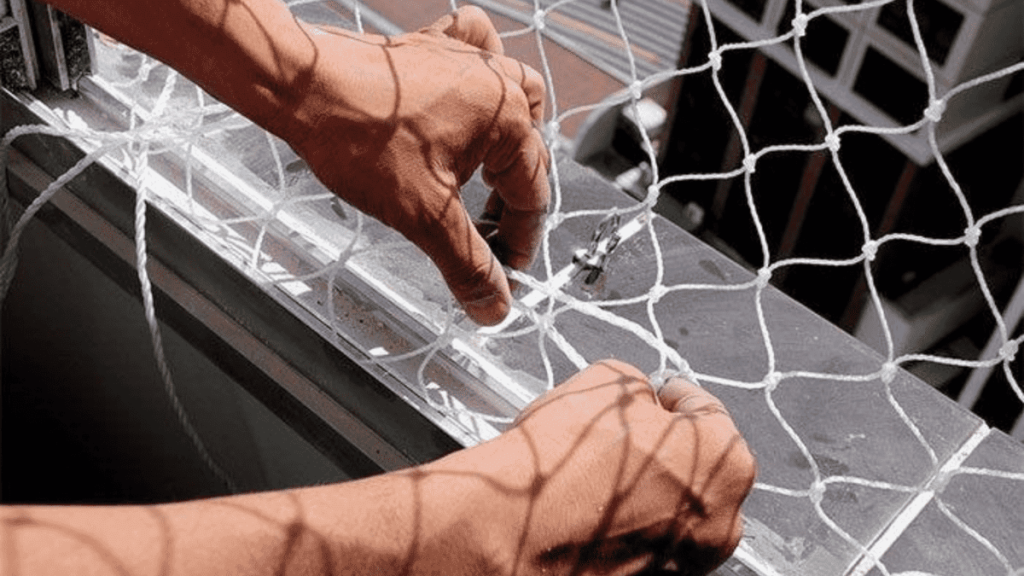
Materials needed
- Hooks (one for every 30cm of net);
- Pliers;
- Drill;
- 4mm naval cord;
- Bushings number 6;
- Safety net of appropriate size (the net must be well stretched to prevent sinking under weight, especially in swimming pools).
- Start by examining the area and structure where the net will be attached. Depending on the type of wall, you may need larger screws.
- Drill holes every 30 cm with the drill, ensuring that the holes are well aligned and evenly distributed along the structure where the net will be attached. Uniformity here is crucial so that the safety net remains taut and does not have gaps, which can reduce its efficiency.
- Insert the wall plugs into the holes you just drilled. Wall plugs are plastic elements that help hold the screws into the wall, giving them something firm to hold onto and ensuring they stay secure.
- Now, insert the hooks into the holes, using the drill to screw them into the anchors. Make sure the hooks are securely attached and that there is no movement when you try to turn them. This is important to ensure that the net does not come loose over time or under pressure.
- Once all the hooks are in place, you can begin installing the safety net. Start at one corner, fitting the net onto the hook, and then, using the naval cord, pass it through each of the holes in the net and the hooks on the wall, ensuring that it is taut and secure.
- When you reach the end, cut off the excess cord and tie a strong knot to ensure the hammock is secure. Check the tension on the hammock to make sure it is taut and ready to use.
Testing the Safety Net
Once installed, it is important to check the strength of the net. You can do this by applying a little pressure to the net to make sure it is secure. However, keep in mind that safety nets are made to prevent falls and are not designed to support the full weight of an adult.
So, when testing, be cautious and avoid placing excessive amounts of weight on the net. Remember, the purpose of the safety net is to provide a safety barrier to prevent accidents, but it is not foolproof. Continue to supervise children and pets when they are in areas protected by the net to ensure their safety.
Exploring the World of Safety Nets: Creative and Practical Uses
In our daily lives, safety is a key factor and safety nets can often be an effective solution to ensure peace of mind in both residential and commercial spaces. Safety nets have several functions: from protecting our loved ones to creating a unique and playful space. See below some creative and practical examples to inspire the use of safety nets in your spaces.
The Safety Net: More than Security, a Decorative Complement
1 – Safety on the Stairs

Imagine a sua escada, um local que pode oferecer riscos, principalmente para crianças e idosos, agora protegida por uma rede de proteção de cor preta. Não só oferece segurança, mas também agrega valor estético ao ambiente, fazendo um contraste elegante com a decoração.
2 – Protection and Fun for Animals
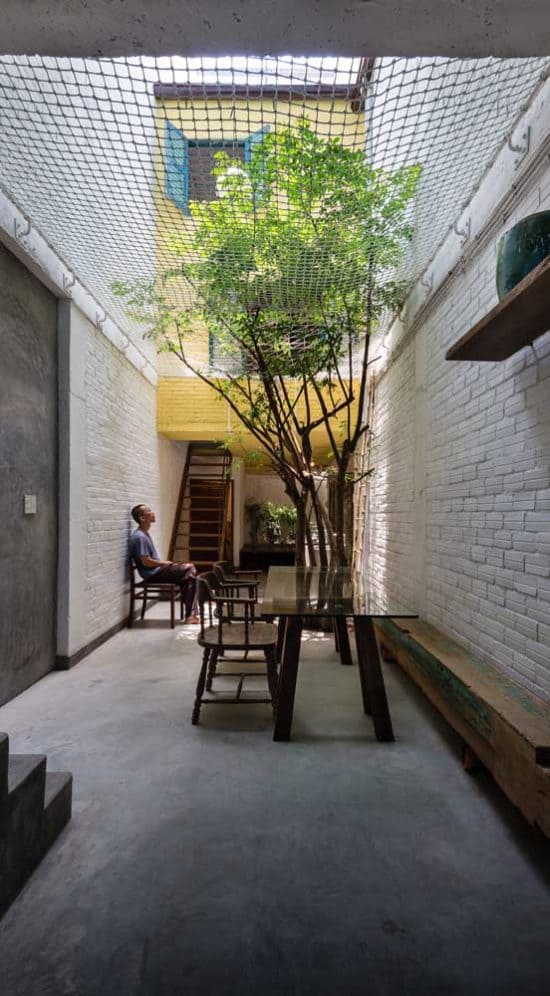
How about a safety net covering the ceiling of your pet’s enclosure? This will prevent them from escaping or getting hurt, and it will also provide a new environment for them to explore, making their experience even more enjoyable.
3 – Durable Safety Net
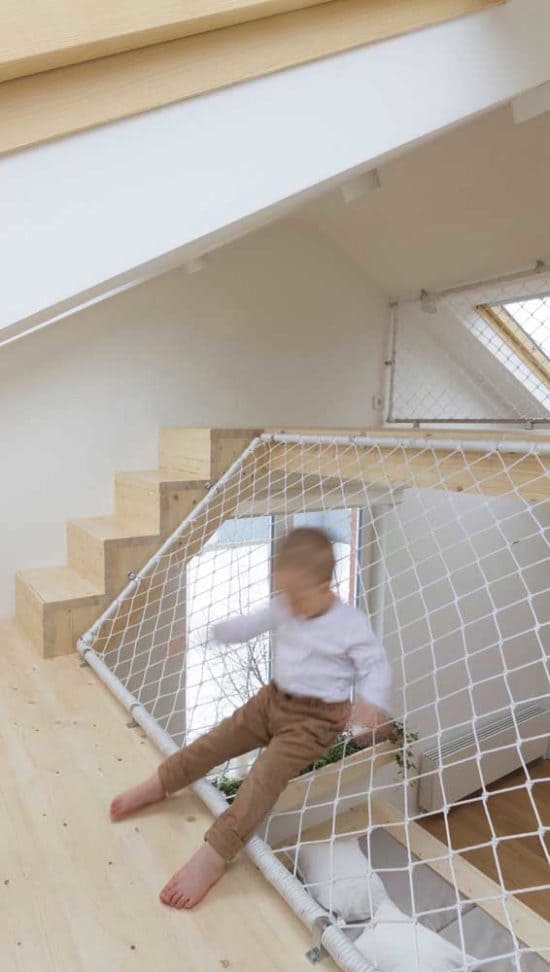
A safety net is not only a safety element, but it must also be able to withstand impacts and the weight of a person. Therefore, when choosing the net, it is essential to consider its resistance.
A New Perspective
Using Safety Nets in Innovative Ways
4 – Use of Vertical Space
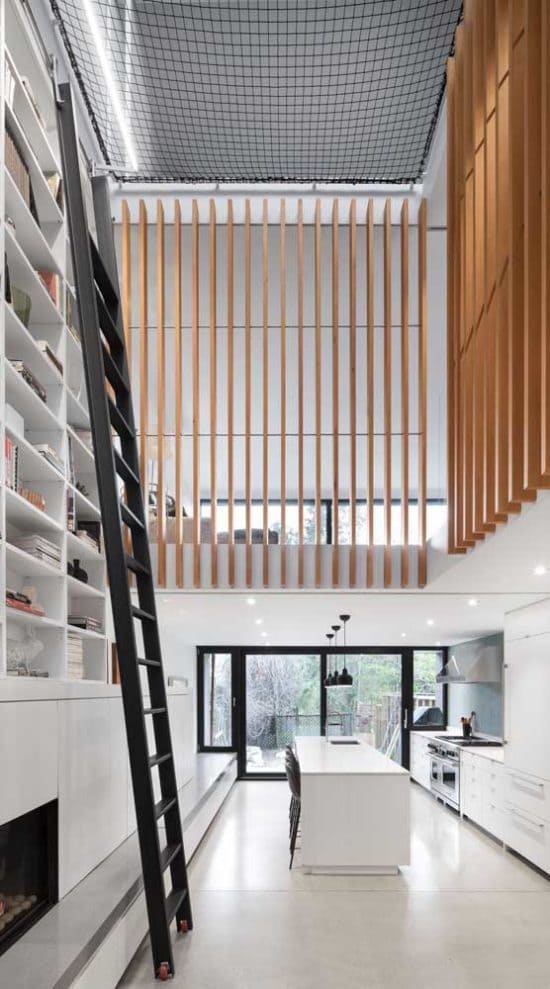
If you have high ceilings in your home, consider installing a safety net to create a new space for relaxation or leisure. In addition to ensuring safety, it also adds a modern and different touch to your home.
5 – Play Area with Safety Net
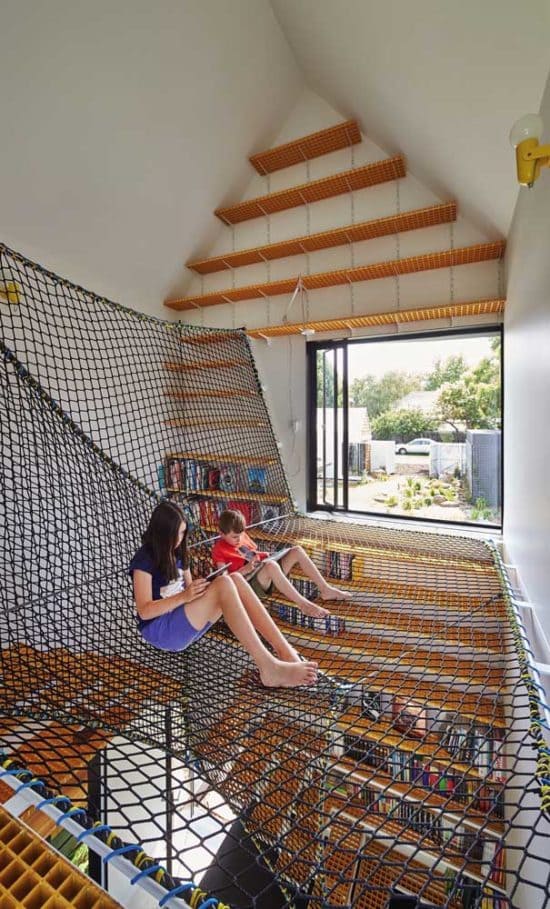
For children, a safety net can become a wonderful play space, a true invitation to imagination and adventure, while, of course, ensuring the safety of the little ones.
6 – Safety and Aesthetics on the Staircase
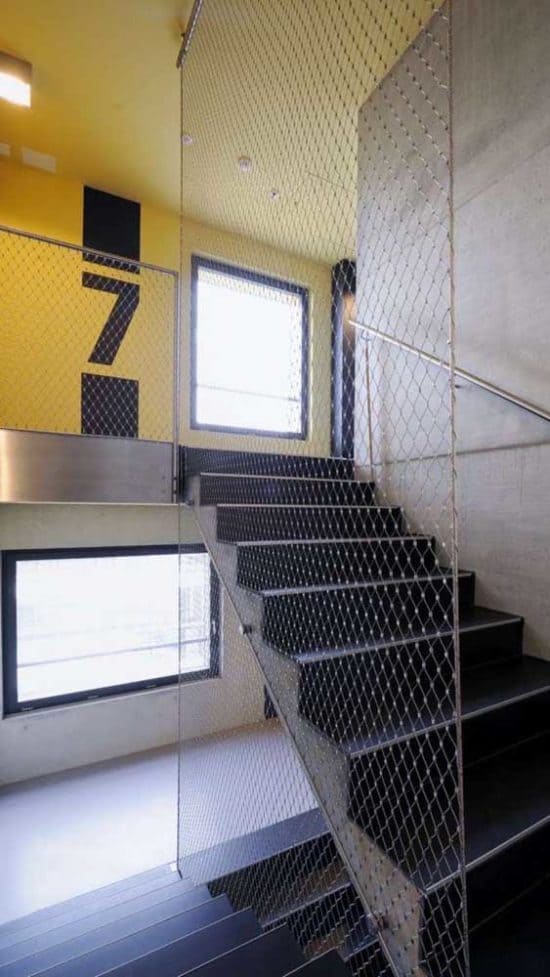
A safety net can also be an interesting solution for the side of stairs. In addition to ensuring safety, it adds a special touch to the decor of the room.
Ensuring Peace of Mind
Safety Nets on Balconies and Mezzanines
7 – Safe Balconies
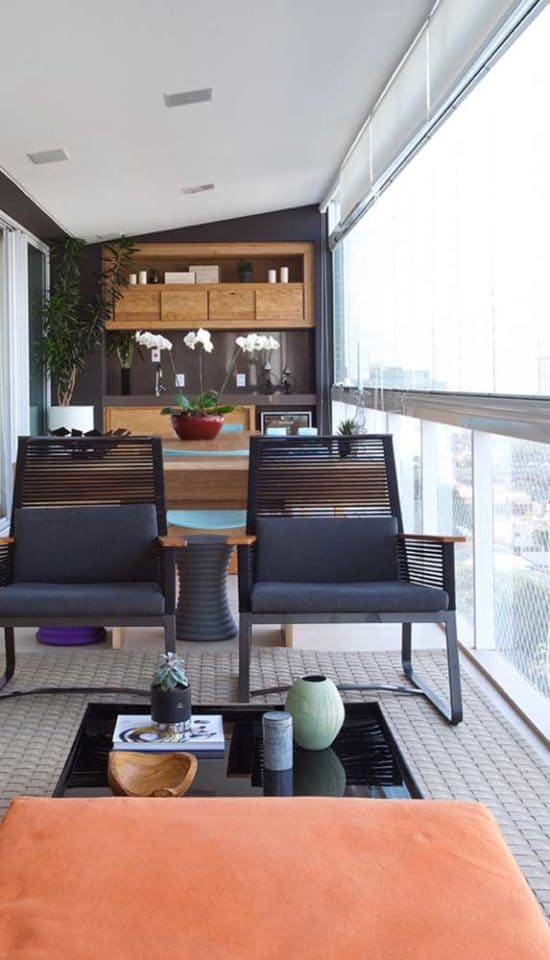
On the balcony, a safety net is almost a must-have for those who live in apartments. To ensure maximum safety, the gap between the knots of the net should be no more than 5 cm.
8 – Safe Mezzanines
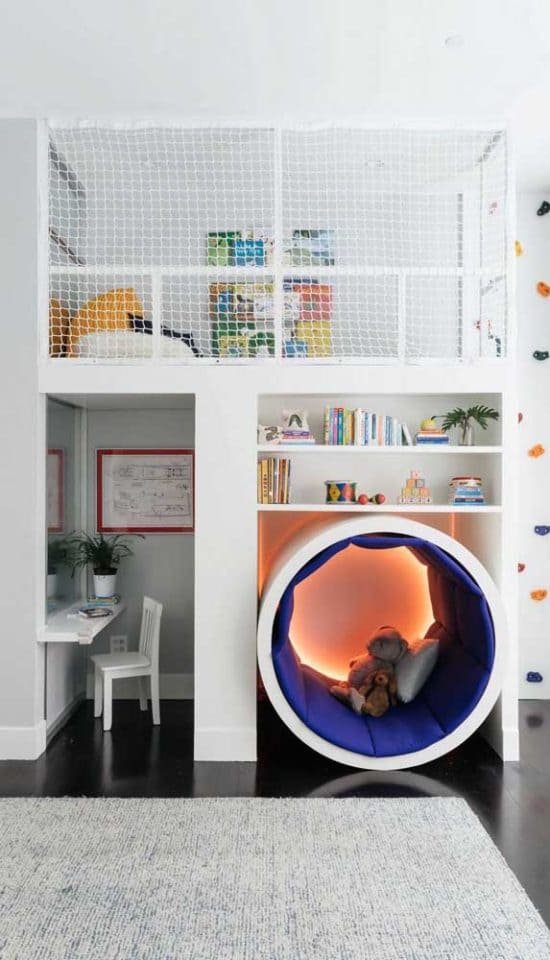
A safety net is the perfect solution to ensure the safety of children on the mezzanine, without compromising visibility or the design of the space.
9 – Nets on Apartment Windows
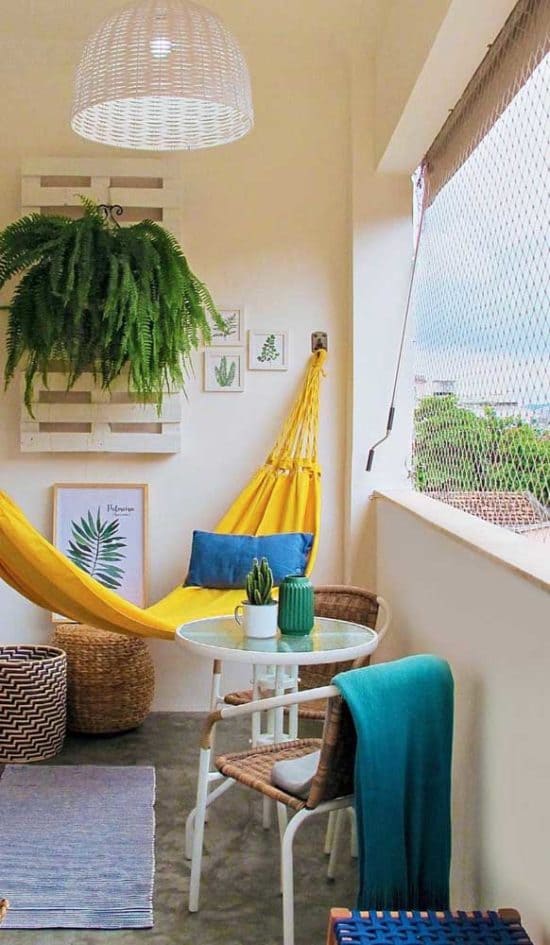
A safety net on the apartment window is almost imperceptible and does not compromise the aesthetics of the environment, while ensuring everyone's safety.
10 – Safe Play Area

With a safety net, parents can breathe easy while their children play. In areas such as backyards or even adapted bedrooms, safety nets provide a safe environment for children, allowing them to explore, play and develop freely without the risk of accidents.
Finally, it is important to remember that the installation of safety nets should always be carried out by specialized professionals, ensuring the effectiveness and safety that the net should provide. Remember, the safety net is more than just a safety item, it is an investment in peace of mind for you and your family.
Did you like this amazing tip? If so, share it with your friends and on your social networks. Leave your comment below and your suggestions. Receive it daily here on our website. Blog of ideas and tips free and follow us on Google News too. Thank you!